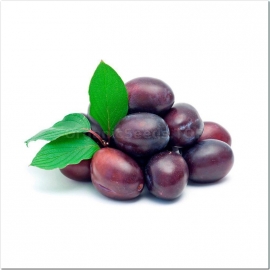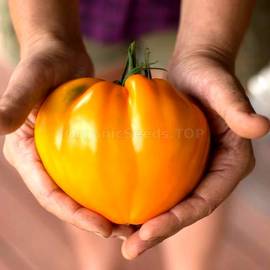
«Italian» - Organic Plum Seeds
2.00 €
Plums as lovely as they are delicious. Attractive flowering trees produce a mouth-watering harvest of large, oblong purple fruits with succulent greenish-yellow flesh that turns red when cooked. Fruits are blessed with lovely intense flavor and sweetness.
-
Organic Plum «Italian»
Plums as lovely as they are delicious. Attractive flowering trees produce a mouth-watering harvest of large, oblong purple fruits with succulent greenish-yellow flesh that turns red when cooked.
Fruits are blessed with lovely intense flavor and sweetness: delicious fresh or dried. Excellent for sauces, preserves and wines; highly suited for canning. Fruits are harvestable in mid-to late-August - a full 15 days before other Italian varieties. Trees are partly self-fertile but better with pollination from other European plums (Prunus domestica).
Plum tree, 10-20 ft. tall, makes an attractive addition to the edible landscape, with a lovely display of showy white flowers in spring, and gorgeous colorful foliage come autumn. Chilling requirements of 700-800 hours below 45°F.
How to Plant Plum Pits
First when considering planting plums from a pit, look at your geographic region. Most varieties of plum grow well in USDA zones 5-9. If this is you, you’re good to go.
When you are planting fresh plum seeds or pits, first remove the pit and wash in lukewarm water with a soft scrub brush to remove any pulp. The seed needs a chilling off period at temperatures of between 33-41 F. (1-5 C.) before it will germinate, about 10-12 weeks. This is called the stratification process and there are two methods to accomplish it. The first method is to wrap the pit in a moist paper towel inside a plastic bag and then place it in the refrigerator. Leave it there for six to eight weeks, keeping an eye on it in case it sprouts earlier. Conversely, natural germination is also a method of stratification wherein the plum pit goes directly in the ground during the fall or winter. It’s a good idea to add some organic matter, but no fertilizer into the hole, about a month before planting the pit.
When planting the fresh plum seeds, they should be 3 inches deep in the soil. Mark where you have planted the pit so you can find it in the spring. Leave the plum pit outside through the winter months and watch for any sprouting; thereafter, keep the new plant moist and watch it grow. If you have cold stratified the seed in the refrigerator, once it has sprouted, remove it and plant the plum pit in a container with well draining soil composed of one part vermiculite and one part potting soil, about 2 inches deep. Situate the pot in a cool, bright area and keep moist but not too wet. After all danger of frost has passed, select a new location in the garden for your new plum tree with at least six hours of direct sunlight. Prepare the soil by digging a hole 12 inches deep, removing any rock or debris. Mix compost into the soil. Plant the new plum from a pit to its original depth and tamp the soil around the plant. Water and keep evenly moist. Otherwise, you should mulch or compost around the base of the seedling to retain moisture and fertilize with tree spikes or a 10-10-10 fertilizer in the early spring and then again in August. When planting plums form a pit, have some patience. It will take a few years before the tree bears fruit, which may or may not be edible. Regardless, it is a fun project and will result in a lovely tree for future generations.
Products Viewed Before
Product code: 8242
1.14 €
Brilliant orange, oxheart fruits have a pronounced point at the blossom end, giving them one of the most perfect heart shapes of any tomato variety known, the fruits sometimes reach a pound in weight, the flavor of the meaty fruits is robust.

